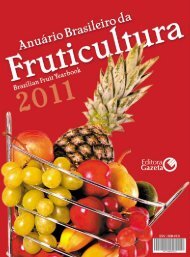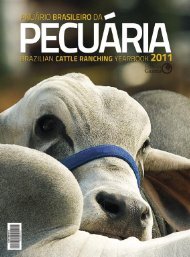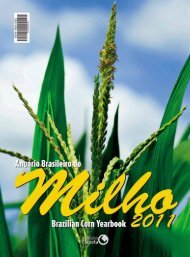tradicionalmenteinovador - Brazil Buyers & Sellers
tradicionalmenteinovador - Brazil Buyers & Sellers
tradicionalmenteinovador - Brazil Buyers & Sellers
You also want an ePaper? Increase the reach of your titles
YUMPU automatically turns print PDFs into web optimized ePapers that Google loves.
Inor Ag. Assmann<br />
widely cultivated in Bahia (Vale do São Francisco and Irecê)<br />
and in São Paulo (São José do Rio Pardo).<br />
>> ADVANCES With the anticipation of the crop in<br />
São Paulo and the high value of the real against the Argentine<br />
peso, imports began to soar again in 2010, says analyst<br />
Rafael Augustto Tapetti, of the Center for Advanced Studies<br />
on Applied Economics, a division of Luiz de Queiroz College<br />
of Agriculture, linked with the University of São Paulo (Cepea/Esalq/USP).<br />
Imports made a comeback to the higher<br />
volumes of the past and, according to the <strong>Brazil</strong>ian Secretariat<br />
of Foreign Trade (Secex), they amounted to 242.4<br />
thousand tons, up 34% from the previous year.<br />
Without the inclusion of 2010, the comparison between<br />
the 2000-2009 decade and the previous one, ascertains<br />
smaller import volumes. While over the 1990-99 period the<br />
operation reached an annual average of 265.6 thousand<br />
tons, in the following decade it remained at 151.8 thousand<br />
tons.<br />
The researchers maintain that the <strong>Brazil</strong>ian onion segment<br />
has made strides towards improving its production<br />
systems to compete with the imported bulbs. All over the<br />
Country, they note, cultivations were enhanced through the<br />
use of new varieties and hybrids, cultural practices were intensified<br />
with modern inputs, irrigation systems were introduced<br />
and, as a result, yields soared expressively.<br />
53





